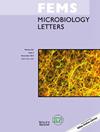用于水中异养需氧细菌计数的 PetrifilmTM AC 与倒平板技术的比较
IF 2.2
4区 生物学
Q3 MICROBIOLOGY
引用次数: 0
摘要
异养细菌 (HPC) 常见于水样中。虽然这些细菌数量并不一定会对健康造成危害,但高数量却能很好地说明水消毒的效率和输水系统的完整性。本研究的目的是比较 PetrifimTM AC 方法和倒平板技术,以检测水样中的 HPC。使用两种方法处理了人工污染水样(192 份)和天然水样(25 份)。两种方法都能准确检测出高、中和低数量的 HPC,平均 Z 值介于 -2 和 + 2 之间。成对的学生 t 检验和相关系数表明,两种方法的结果差异不大。两种方法都具有可接受的重复性和再现性。PetrifilmTM AC 和浇板法的测量不确定性分别为 2.9% 和 5.4%。PetrifilmTM AC 在 33 °C和 37 °C下的稳定性良好。总之,PetrifimTM AC 易于处理、读取且耗时少,在确定水中的 HPC 方面与传统的浇板法相当。此外,PetrifimTM AC 所需的处理和培养空间较小,产生的废物处理量较少,除培养箱外无需其他设备。本文章由计算机程序翻译,如有差异,请以英文原文为准。
Comparison of PetrifilmTM AC and Pour plate techniques used for the heterotrophic aerobic bacterial count in water
Heterotrophic bacteria (HPC) are commonly found in water samples. While these bacterial counts do not necessarily indicate a health hazard, high counts provide a good indication of the efficiency of water disinfection and integrity of distribution systems. The aim of this study was to compare the PetrifimTM AC method to the Pour Plate technique for the testing of HPC in water samples. Artificially contaminated (192 samples) and natural water samples (25) were processed using two methods. Both methods accurately detected high, medium and low counts of HPC, producing average Z scores between -2 and + 2. Paired-wise student t-test and correlation coefficient showed nonsignificant differences between the results of two methods. Acceptable repeatability and reproducibility was obtained using both the methods. Uncertainty of measurement for PetrifilmTM AC and Pour Plate method was found to be 2.9% and 5.4% respectively. PetrifilmTM AC proved to be robust at 33 °C and 37 °C. In conclusion, PetrifimTM AC, which is easy to process, read and less time consuming, proved to be comparable to the conventional Pour Plate method in establishing HPC in water. In addition, PetrifimTM AC requires less space for the processing and incubation, generate small volume of waste for disposal and requires no equipment, except for the incubator.
求助全文
通过发布文献求助,成功后即可免费获取论文全文。
去求助
来源期刊

Fems Microbiology Letters
生物-微生物学
CiteScore
4.30
自引率
0.00%
发文量
112
审稿时长
1.9 months
期刊介绍:
FEMS Microbiology Letters gives priority to concise papers that merit rapid publication by virtue of their originality, general interest and contribution to new developments in microbiology. All aspects of microbiology, including virology, are covered.
2019 Impact Factor: 1.987, Journal Citation Reports (Source Clarivate, 2020)
Ranking: 98/135 (Microbiology)
The journal is divided into eight Sections:
Physiology and Biochemistry (including genetics, molecular biology and ‘omic’ studies)
Food Microbiology (from food production and biotechnology to spoilage and food borne pathogens)
Biotechnology and Synthetic Biology
Pathogens and Pathogenicity (including medical, veterinary, plant and insect pathogens – particularly those relating to food security – with the exception of viruses)
Environmental Microbiology (including ecophysiology, ecogenomics and meta-omic studies)
Virology (viruses infecting any organism, including Bacteria and Archaea)
Taxonomy and Systematics (for publication of novel taxa, taxonomic reclassifications and reviews of a taxonomic nature)
Professional Development (including education, training, CPD, research assessment frameworks, research and publication metrics, best-practice, careers and history of microbiology)
If you are unsure which Section is most appropriate for your manuscript, for example in the case of transdisciplinary studies, we recommend that you contact the Editor-In-Chief by email prior to submission. Our scope includes any type of microorganism - all members of the Bacteria and the Archaea and microbial members of the Eukarya (yeasts, filamentous fungi, microbial algae, protozoa, oomycetes, myxomycetes, etc.) as well as all viruses.
 求助内容:
求助内容: 应助结果提醒方式:
应助结果提醒方式:


